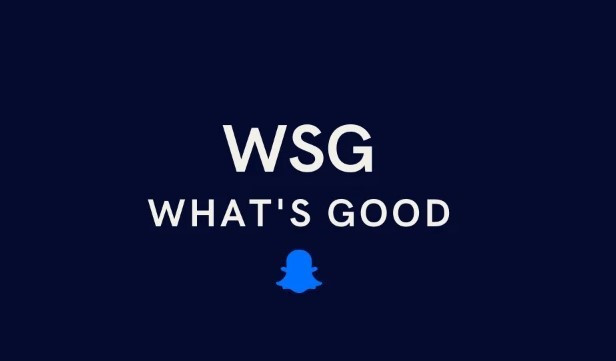Unraveling the Meaning of “WSG”: A Comprehensive Exploration
In the ever-evolving landscape of digital communication, the emergence of new abbreviations and acronyms has become a common phenomenon. One such term that has gained significant traction in recent years is “WSG.” But what exactly does this abbreviation mean, and how can it be used effectively in various contexts? In this comprehensive article, we’ll delve into the origins, meanings, and applications of the term “WSG,” providing a deeper understanding of this versatile linguistic expression.
The Origins of “WSG”
The abbreviation “WSG” has its roots in the world of online messaging, social media, and informal communication. While the exact origins of the term are not entirely clear, it is believed to have emerged as a shorthand version of several common phrases, including:
- “What’s Good?”
- “What’s Going On?”
- “What’s Happening?”
These types of open-ended questions are often used to initiate or continue a conversation, express interest in someone’s well-being or activities, or simply acknowledge the presence of another person.As digital communication became more prevalent, the need for concise and efficient ways to convey these sentiments grew. The abbreviation “WSG” emerged as a way to capture the essence of these phrases in a compact and easily recognizable form.
The Meaning of “WSG”
At its core, the term “WSG” is used to express a sense of interest, curiosity, or acknowledgment towards another person or situation. The specific meaning and connotations of the abbreviation can vary depending on the context in which it is used, but generally, it can be interpreted as:
- Greeting or Acknowledgment: “WSG?” can be used as a way to greet someone or acknowledge their presence, similar to saying “What’s up?” or “How’s it going?”
- Inquiry or Interest: “WSG?” can also be used to express interest in someone’s well-being, activities, or current state of affairs, similar to asking “What’s going on?”
- Casual Conversation Starter: “WSG?” can serve as a casual way to initiate a conversation or continue an existing one, inviting the other person to share updates or engage in a more open-ended discussion.
- Expressing Positivity: In some contexts, “WSG” may be used to convey a sense of positivity, enthusiasm, or a general sense of “what’s good” in the current situation or interaction.
It’s important to note that the interpretation and usage of “WSG” can vary depending on the specific context, tone, and relationship between the individuals involved in the communication.
Using “WSG” in Everyday Life
The term “WSG” can be employed in a variety of everyday situations and contexts, reflecting its versatility and widespread adoption. Here are some examples of how “WSG” can be used:
- Greeting a Friend: “WSG, man? Haven’t seen you in a while!”
- Checking in on Someone: “Hey, WSG? How’s everything going?”
- Starting a Casual Conversation: “WSG? I was just thinking about you and wanted to see how you’re doing.”
- Expressing Positivity: “WSG, everyone? Looks like it’s going to be a great day!”
- Responding to a Message: “WSG? Just saw your message and wanted to say hi!”
- Acknowledging Someone’s Presence: “WSG, [name]? Good to see you here.”
By incorporating “WSG” into our everyday language, we can add a touch of informality, familiarity, and a sense of casual engagement to our interactions, fostering more natural and relatable communication.
The Cultural Significance of “WSG”
The term “WSG” has gained significant cultural relevance, particularly within certain communities and subcultures. Here are some insights into the cultural significance of “WSG”:
- Hip-Hop and Urban Culture: The abbreviation “WSG” is often associated with hip-hop and urban culture, where it is commonly used as a greeting, expression of interest, or acknowledgment of someone’s presence or status.
- Youth and Millennial Culture: The widespread use of “WSG” is particularly prevalent among younger generations, such as millennials and Gen Z, who have embraced the term as a part of their digital and social communication vernacular.
- Informal and Casual Communication: The use of “WSG” reflects a broader trend towards more informal, casual, and conversational modes of communication, particularly in online and digital spaces.
- Linguistic Diversity and Evolution: The adoption and adaptation of “WSG” in various cultural and linguistic contexts highlight the dynamic nature of language and the continuous evolution of communication practices.
By understanding the cultural significance of “WSG,” we can gain a deeper appreciation for the ways in which language reflects and shapes the values, norms, and experiences of different communities and subcultures.
Frequently Asked Questions (FAQ)
- What does “WSG” mean?
- “WSG” is an abbreviation that typically stands for “What’s Good?” or “What’s Going On?” It is used to express interest, greet someone, or initiate a casual conversation.
- Where does the term “WSG” come from?
- The abbreviation “WSG” is believed to have originated from the phrases “What’s Good?” and “What’s Going On?” as a way to shorten these expressions in digital and informal communication.
- How is “WSG” used in everyday language?
- “WSG” can be used in a variety of contexts, such as greeting a friend, checking in on someone, starting a casual conversation, expressing positivity, responding to a message, or acknowledging someone’s presence.
- What is the cultural significance of “WSG”?
- The term “WSG” is particularly associated with hip-hop and urban culture, as well as youth and millennial culture, where it reflects a more informal and casual mode of communication.
- Can “WSG” be used in formal or professional settings?
- The use of “WSG” is generally considered more appropriate in informal, casual, and conversational settings. In more formal or professional contexts, it may be better to use more standard greetings or inquiries.
- Are there any potential misunderstandings or issues with using “WSG”?
- While “WSG” is widely used and understood within certain communities, it may not be as familiar or well-received in other contexts. It’s essential to be mindful of the audience and the potential for misunderstandings or miscommunications.
- How can I incorporate “WSG” into my own communication?
- When using “WSG,” consider the context, tone, and relationship with the person you’re communicating with. Experiment with incorporating “WSG” into your casual conversations and see how it is received.
- Are there any other similar abbreviations or terms related to “WSG”?
- There may be other abbreviations or slang terms that serve a similar purpose to “WSG,” such as “Sup?” (What’s up?), “Yo” (Hey), or “Whaddup?” (What’s up?).
- Can “WSG” be used in written communication, such as emails or messages?
- Yes, “WSG” can be used in written communication, particularly in more informal or casual contexts, such as text messages, social media posts, or instant messaging.
- Is there a difference between using “WSG” and asking “What’s good?” in full?
- While both expressions convey a similar meaning, “WSG” is generally considered more concise and informal, while “What’s good?” may be perceived as slightly more direct or open-ended.
Comparison of “WSG” with Similar Expressions
| Expression | Meaning |
|---|---|
| What’s up? | A casual greeting or inquiry about someone’s well-being or activities |
| Sup? | A shortened version of “What’s up?” |
| How’s it going? | A more formal way of asking about someone’s current state or activities |
| What’s new? | An inquiry about any recent developments or changes in someone’s life |
| What’s happening? | A way to ask about the current situation or events |
| Yo | A casual greeting or way to get someone’s attention |
Source: Merriam-Webster Dictionary
Conclusion
The term “WSG” has become a ubiquitous part of modern digital communication, reflecting the evolving nature of language and the diverse ways in which we express interest, greetings, and casual conversation. By understanding the origins, meanings, and cultural significance of “WSG,” we can navigate the nuances of this linguistic phenomenon with greater awareness and sensitivity, fostering more meaningful and engaging interactions.Whether used to initiate a friendly exchange, check in on someone’s well-being, or simply acknowledge a person’s presence, “WSG” offers a concise and versatile way to connect with others in a casual and relatable manner. As language continues to evolve, the study of terms like “WSG” can provide valuable insights into the cultural and social dynamics that shape our modes of communication.



